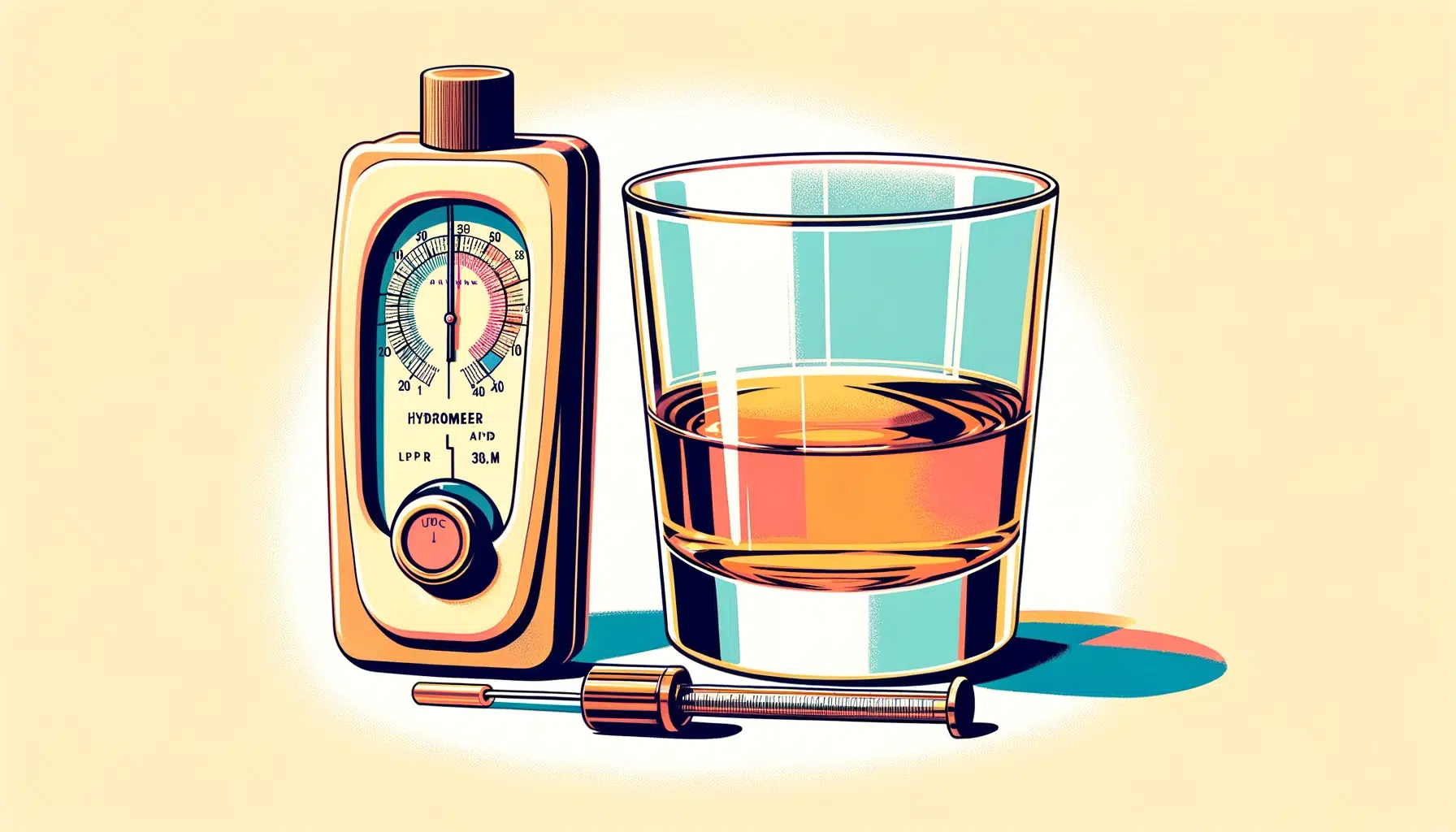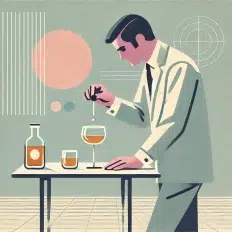Bourbon holds a special place in the world of whiskey, often celebrated for its rich flavors and storied heritage. Known for its distinct sweetness and robust character, bourbon offers a unique drinking experience that sets it apart from other types of whiskey. This unique profile is shaped by its specific production methods and aging processes.
Key aspects of bourbon include its aging in new charred oak barrels, the influence of American corn, and the stringent regulations that define its identity. These factors contribute to the diverse range of flavors found in bourbon, from caramel and vanilla to spicy and smoky notes. Diving deeper, each bottle of bourbon tells a story through its alcohol content, distillation techniques, and maturation process.
The following sections will explore these elements in detail, providing a comprehensive understanding of what makes bourbon a beloved spirit.
What is the typical alcohol content in Bourbon?
Bourbon typically has an alcohol content between 40% and 50% ABV (Alcohol by Volume). Most commonly, it is bottled at 45% ABV. This range allows bourbon to maintain its distinct flavor profile while providing a balanced drinking experience.
The specific ABV can vary depending on the distillation process and the distiller’s preferences, but it generally falls within this standard range.
Usually between 40% and 50% ABV (Alcohol by Volume)
Bourbon’s alcohol content generally falls between 40% and 50% ABV (Alcohol by Volume). This range ensures that the spirit retains its characteristic flavors and potency, making it enjoyable for a wide range of whiskey enthusiasts.
Commonly bottled at 45% ABV
Most bourbon is commonly bottled at 45% ABV, striking a balance that highlights its rich flavors while providing a smooth drinking experience. This standard helps maintain consistency across different brands and batches.
How is the alcohol content in Bourbon measured?
The alcohol content in bourbon is measured using instruments like a hydrometer or an alcoholmeter. These tools help distillers determine the ABV during production. The accuracy of these measurements is crucial for maintaining the desired alcohol levels and ensuring the quality and consistency of the bourbon.
Using a hydrometer or alcoholmeter
The alcohol content in bourbon is measured using a hydrometer or an alcoholmeter. These instruments provide precise readings of the spirit’s ABV (Alcohol by Volume), ensuring it meets the desired specifications.
Confirmed by distillers during production
Distillers confirm the alcohol content during production to maintain quality and consistency. Accurate measurement is essential for delivering the expected flavor profile and strength in every bottle of bourbon.
Why does the alcohol content in Bourbon vary?
The alcohol content in bourbon can vary due to several factors. Differences in distillation processes and aging duration in barrels play significant roles. Additionally, climate conditions during aging can affect the final ABV.
These variables contribute to the unique characteristics and flavors found in each batch of bourbon.
Differences in distillation processes
The alcohol content in bourbon can vary due to differences in distillation processes. Each distillery may use unique methods and equipment, resulting in variations in the final ABV (Alcohol by Volume).
Aging duration in barrels
The aging duration in barrels also impacts the alcohol content. Longer aging periods can lead to more evaporation and concentration of flavors, which can alter the ABV.
Climate conditions during aging
Climate conditions during aging significantly affect the alcohol content. Temperature and humidity levels influence the rate of evaporation and interaction with the barrel wood, leading to variations in the bourbon’s final ABV.
How does aging affect the alcohol content in Bourbon?
Aging significantly impacts the alcohol content in bourbon. Over time, evaporation (often referred to as the angel’s share) reduces the overall volume and can decrease the ABV. The bourbon also interacts with the barrel wood, extracting flavors and compounds that influence its character.
Additionally, factors like barrel size and storage conditions play a role in how the alcohol content evolves during the aging process.
Evaporation of alcohol over time (angel’s share)
During aging, the evaporation of alcohol over time, known as the angel’s share, reduces the overall volume and can lower the ABV. This natural process is influenced by the environment where the barrels are stored.
Interaction with the barrel wood (extraction of flavors)
The interaction with the barrel wood plays a crucial role in aging. As bourbon ages, it extracts flavors and compounds from the wood, which enhances its character and complexity. This extraction process can also impact the alcohol content.
Barrel size and storage conditions
Barrel size and storage conditions significantly affect the aging process. Smaller barrels have a higher surface area-to-volume ratio, leading to more intense interactions and faster aging. Additionally, storage conditions such as temperature and humidity influence how the alcohol content evolves over time.
What regulations govern the alcohol content in Bourbon?
Bourbon production is strictly regulated by U.S. federal standards to ensure quality and authenticity. The spirit must be distilled to no more than 80% ABV and entered into the barrel for aging at no more than 62.5% ABV.
Additionally, bourbon must be bottled at no less than 40% ABV. These regulations help maintain the consistency and integrity of bourbon, ensuring it meets specific criteria to be labeled as such.
U.S. federal standards
Bourbon production is governed by U.S. federal standards to ensure the spirit’s quality and authenticity. These regulations define the specific criteria that bourbon must meet.
Must be distilled to no more than 80% ABV
Bourbon must be distilled to no more than 80% ABV. This limit ensures that the spirit retains its essential flavors and characteristics derived from the grains used in its production.
Must be entered into the barrel for aging at no more than 62.5% ABV
Bourbon must be entered into the barrel for aging at no more than 62.5% ABV. This requirement helps maintain the proper interaction between the spirit and the barrel wood, which is crucial for developing bourbon’s distinct flavors.
Bottled at no less than 40% ABV
Bourbon must be bottled at no less than 40% ABV. This standard ensures that the final product has the strength and flavor profile expected of bourbon, providing a consistent drinking experience.
How can consumers identify the alcohol content in Bourbon?
Consumers can easily identify the alcohol content in bourbon by checking the label on the bottle. The ABV (Alcohol by Volume) percentage is clearly stated on the label, providing straightforward information about the spirit’s strength. Additionally, the proof number, which is twice the ABV percentage, is often displayed, offering another way to understand the bourbon’s alcohol content.
This transparency helps consumers make informed choices based on their preferences.
Label on the bottle
Consumers can identify the alcohol content in bourbon by looking at the label on the bottle. This label provides essential information about the spirit.
ABV percentage clearly stated
The ABV (Alcohol by Volume) percentage is clearly stated on the label. This figure indicates the strength of the bourbon, helping consumers understand its potency.
Proof number (twice the ABV percentage)
The proof number, which is twice the ABV percentage, is also often displayed on the label. This additional information offers another way to gauge the bourbon’s alcohol content, making it easier for consumers to make informed choices.
What factors influence the final ABV in Bourbon?
Several factors influence the final ABV (Alcohol by Volume) in bourbon. The initial distillation strength sets the baseline for the spirit’s alcohol content. The length of the aging process also plays a crucial role, as longer aging can lead to more evaporation and changes in ABV.
Additionally, the type of storage barrels used affects how the bourbon interacts with the wood, further impacting its final alcohol content. These elements combine to shape the unique characteristics and strength of each batch of bourbon.
Initial distillation strength
The initial distillation strength sets the baseline for bourbon’s alcohol content. This initial ABV determines the starting point for the spirit before aging begins.
Length of aging process
The length of the aging process plays a crucial role in the final ABV. Longer aging periods can lead to more evaporation and changes in alcohol content, impacting the bourbon’s strength and flavor profile.
Type of storage barrels used
The type of storage barrels used also affects the final ABV. Different barrels influence how the bourbon interacts with the wood, altering both the alcohol content and the spirit’s overall characteristics.
How does proofing down affect Bourbon?
Proofing down involves diluting bourbon with water before bottling to achieve the desired ABV (Alcohol by Volume). This process helps adjust the final alcohol content to a consistent level, ensuring a balanced flavor profile. By maintaining the right balance, distillers can deliver a bourbon that meets quality standards and provides a smooth drinking experience.
Proofing down also allows for greater control over the spirit’s characteristics, making it more appealing to a wider range of consumers.
Dilution with water before bottling
Dilution with water before bottling is a crucial step in proofing down bourbon. This process helps achieve the desired ABV (Alcohol by Volume) by carefully adjusting the spirit’s strength.
Adjusts the final ABV to desired level
Proofing down adjusts the final ABV to the desired level, ensuring that the bourbon meets specific quality standards and provides a consistent drinking experience.
Maintains flavor balance and consistency
By proofing down, distillers can maintain flavor balance and consistency. This ensures that each bottle of bourbon delivers the expected taste profile, making it more enjoyable and reliable for consumers.
What are high-proof Bourbons?
High-proof bourbons are those with an ABV (Alcohol by Volume) above 50%. Often labeled as “cask strength” or “barrel proof”, these bourbons are bottled directly from the barrel without significant dilution. They offer more intense flavors and a higher alcohol content, appealing to enthusiasts who appreciate a robust and full-bodied drinking experience.
High-proof bourbons showcase the unaltered essence of the spirit, providing a unique and powerful taste profile.
Bourbons with ABV above 50%
High-proof bourbons are those with an ABV (Alcohol by Volume) above 50%. These bourbons are known for their higher strength and robust character.
Often labeled as “cask strength” or “barrel proof”
These high-proof bourbons are often labeled as “cask strength” or “barrel proof”, indicating that they are bottled directly from the barrel with minimal dilution.
More intense flavors and higher alcohol content
High-proof bourbons offer more intense flavors and a higher alcohol content, appealing to enthusiasts who enjoy a bold and full-bodied drinking experience.





